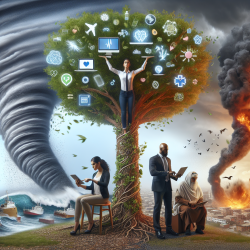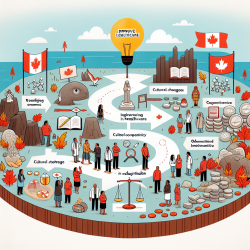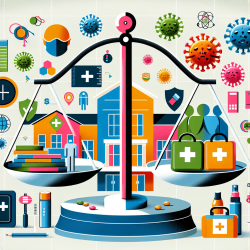As climate change drives the increasing frequency and severity of natural disasters, it is essential for healthcare practitioners to leverage digital health technologies (DHTs) to ensure quality healthcare delivery. The research article, "Lessons Learned from Natural Disasters around Digital Health Technologies and Delivering Quality Healthcare," provides valuable insights into how DHTs can be optimized for resilience in disaster scenarios.
Key Lessons from the Research
1. Importance of Infrastructure
Natural disasters often damage critical infrastructure, including power grids and telecommunications networks. Healthcare organizations must work at a transdisciplinary level to develop digitally enabled care models that can withstand these pressures. This includes creating non-digital pathways that can be quickly deployed if digital infrastructure fails.
2. Leveraging Telehealth
Telehealth has proven effective in disaster settings by providing remote consultations and reducing the burden on emergency services. For example, during Hurricane Florence, telemedicine services helped evacuees receive medical assessments and prescription refills without overwhelming hospital emergency rooms.
3. Utilizing Electronic Health Records (EHRs)
EHRs are invaluable for ensuring continuity of care for displaced populations. After Hurricane Katrina, the Department of Veterans Affairs successfully used EHRs to maintain patient records, demonstrating the importance of having interoperable and accessible health records during disasters.
4. Mobile Health (mHealth) Applications
mHealth applications can provide real-time data and support patient management during disasters. For instance, during the 2015 Nepal earthquake, mobile apps like WhatsApp were used to coordinate medical resources and address healthcare needs efficiently.
5. Community and Citizen Science
Engaging communities through citizen science can enhance disaster response. Local knowledge and real-time data collection by community members can provide critical information for healthcare planning and intervention. For example, during the 2022 Lismore floods in Australia, a local business owner used social media to coordinate rescue efforts effectively.
Future Directions
To build climate-resilient digital healthcare systems, further research is needed to design sustainable DHTs with minimal environmental impact. Training healthcare professionals to utilize these technologies effectively and addressing digital literacy in vulnerable communities are also crucial steps.
By integrating these lessons and encouraging further research, healthcare practitioners can improve their disaster preparedness and response, ensuring quality healthcare delivery even under challenging conditions.
To read the original research paper, please follow this link: Lessons Learned from Natural Disasters around Digital Health Technologies and Delivering Quality Healthcare.










